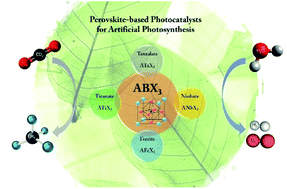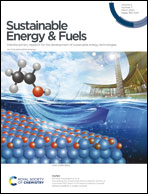An insight into perovskite-based photocatalysts for artificial photosynthesis
Abstract
Although perovskites have been proven to exhibit extraordinary performance in solar cell applications, the potential of perovskites in photocatalysis is yet to be fully explored. In particular, the unique properties of perovskite materials including chemical and optical stabilities, tunable bandgaps and crystal structures, long charge carrier lifetime and favorable band alignment make them a potential next generation photocatalyst. Considering that, a perspective on the state-of-the-art developments in perovskite-based photocatalysts and the modification strategies, i.e. defect engineering, doping or co-doping with metals or non-metals, sensitization, and facet control, is timely. This paper details perovskite-based photocatalysts for artificial photosynthesis, namely photocatalytic carbon dioxide (CO2) reduction and water splitting. In this perspective, perovskites are divided into four groups based on the B site element, namely titanates, tantalates, niobates and ferrites. The synthesis parameters and factors affecting the efficiency of photocatalysts are discussed. Finally, this perspective outlines the recent development of perovskite-based photocatalysts and the immense prospects that it presents when an appropriate modification technique is employed.



 Please wait while we load your content...
Please wait while we load your content...